Work schedules shape everything about an employee’s day — from when they wake up, to how they manage family responsibilities, to whether they feel respected at work. And while pay is always important, Gallup research shows that job quality depends just as much on the quality of work schedules. High-quality schedules (those that are predictable, stable, and give employees some control) are linked to better financial security, stronger work-life balance, and higher job satisfaction.
Yet many workers feel stuck in systems that don’t give them enough flexibility, leave them guessing about coworkers’ availability, or pile on stress through last-minute changes and unclear communication. For many, schedules come with little notice, frequent changes, or even back-to-back “clopening” shifts that leave barely enough time to rest. These patterns don’t just disrupt routines: They’re linked to higher stress, poor sleep, and lower overall happiness, showing just how deeply scheduling practices affect employee wellbeing.
Buddy Punch’s survey of more than 500 nonmanagerial employees reveals that the way organizations handle scheduling is far from a minor detail. Fixed hours, limited flexibility, and poor coordination aren’t just inconveniences — they affect motivation, productivity, and employee well-being. And while many companies get the basics right, the gaps in communication and predictability are costing workers peace of mind and companies valuable output.
This report explores what employees really want from their schedules: more flexibility, more visibility, and clearer communication. The findings highlight both the frustrations workers face and the simple fixes they say would make the biggest difference.
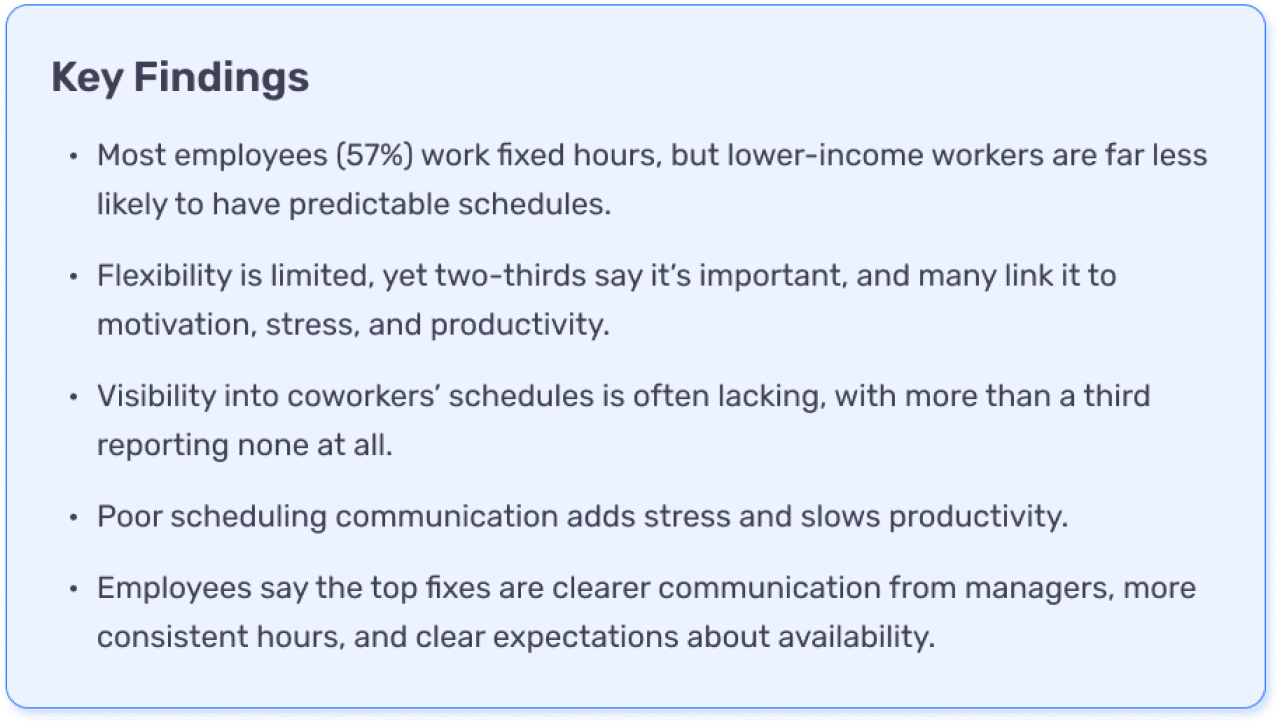
For many workers, the traditional nine-to-five remains the reality. In this survey, a majority (57%) report working fixed hours.
But this is far less common among the lowest earners. Only 41% of those making under $25,000 work fixed hours, compared with 62% of those earning $25,000-$49,999 and 64% in the $50,000-$74,999 range.

This income divide shows that predictable schedules are not guaranteed for those in the most precarious financial situations. Workers who can least afford volatility are also least likely to enjoy the stability of fixed hours, suggesting that scheduling inequity may compound financial stress rather than relieve it.
These unpredictable hours don’t just make budgeting nearly impossible — they also mean missed bills, difficulty saving, and fewer chances to supplement income with a second job, trapping many in a cycle of instability.
Fixed schedules may provide stability, but they don’t guarantee control. For many employees, the real challenge isn’t just whether their hours are fixed, but whether they have any say in how those hours fit into their lives. That’s why conversations about work schedules quickly shift from “when do I work?” to “how much flexibility do I have?”
One of the clearest demands from employees today is more control, visibility, and autonomy around scheduling. Research conducted by WorkForce Software in 2024 found that 84% of employees now consider scheduling flexibility an essential factor when choosing an employer. Rigid, inflexible schedules create immense stress and work-life conflicts, pushing many to disengage or leave for roles that better accommodate their personal lives.
Most employees say their schedules don’t give them much wiggle room. Two in five (40%) say they have “a little” flexibility, and 29% say “a moderate amount.” Just 12% enjoy high flexibility, while 18% have none at all.
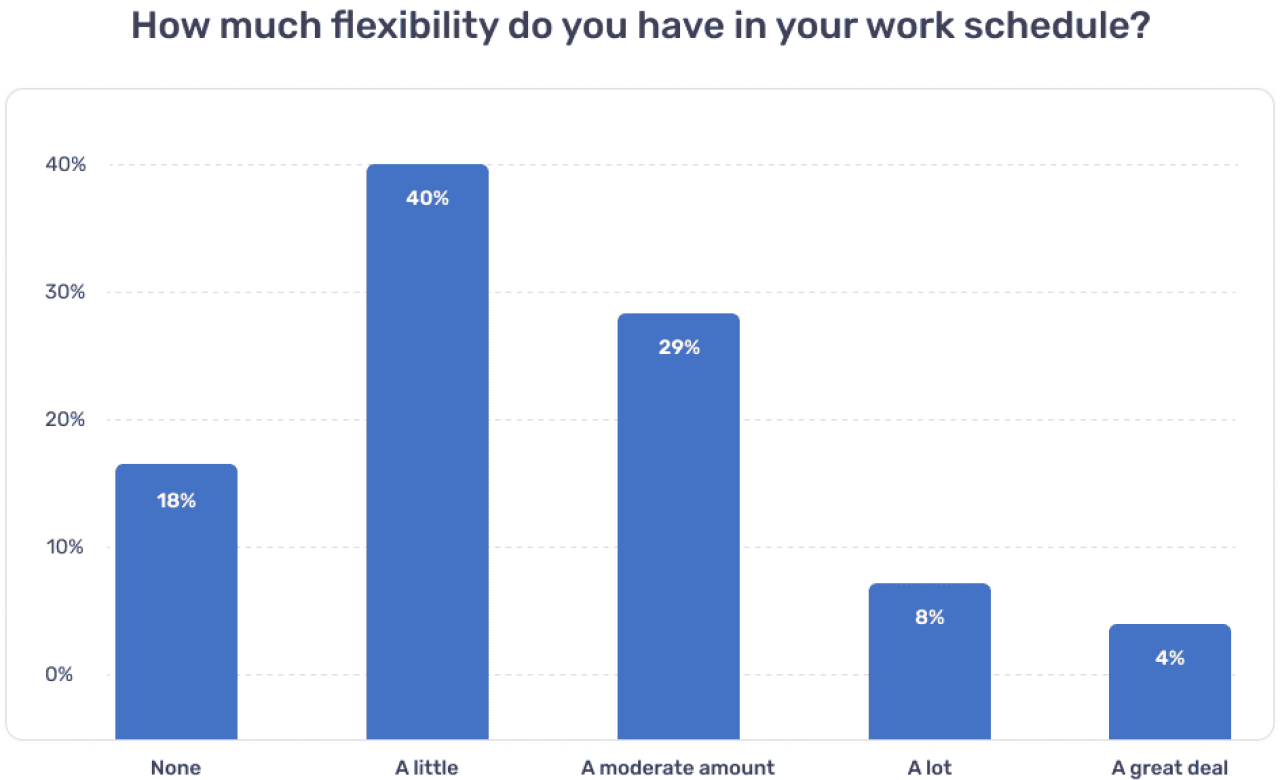
Even with those limitations, flexibility ranks as a clear priority. Two-thirds (67%) of employees rate it at least moderately important. Over a quarter (26%) say it’s very important, and 13% say it’s extremely important.
Income and gender reveal key divides. Half of employees making under $25,000 rate flexibility as very or extremely important, compared with just 37% of those earning more. Women are also more likely than men to rank flexibility highly (43% vs. 35%).
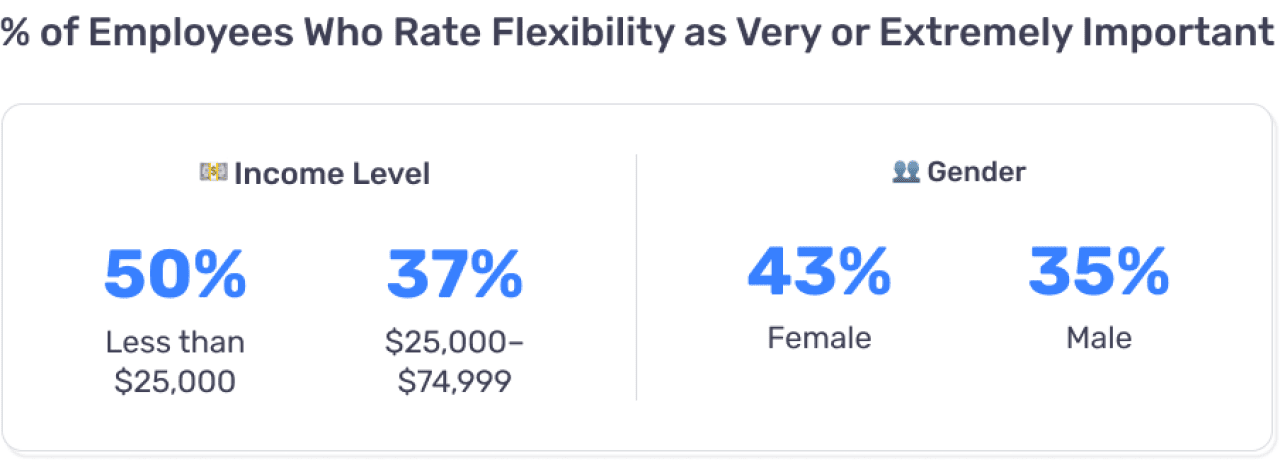
Flexibility isn’t just a perk; it’s a marker of equity. Those with the least financial security and women, who often shoulder more caregiving responsibilities, are also the groups most likely to say flexibility is essential. The lack of flexibility doesn’t just inconvenience them; it reinforces existing inequalities by making it harder to balance work with life outside the job. Studies show, for example, that low-wage jobs frequently offer little control over schedules or hours, which increases stress and worsens mental health. Women in particular are more likely to prioritize flexibility than men: In a 2023 survey from The Conference Board, 72% of women said workplace flexibility is a priority, compared with 57% of men.
The connection between flexibility and equity is what makes the potential benefits of flexibility so important. Employees aren’t simply asking for convenience — they’re pointing to outcomes that matter to both sides of the workplace equation. If they had more flexible schedules:

Flexibility is one of the few levers that can simultaneously support employee well-being and organizational performance. Workers see it as a pathway to higher energy, lower stress, and better output — signals that flexibility isn’t a “nice to have,” but a productivity strategy hiding in plain sight.
But flexibility alone doesn’t solve everything. Even when employees have some choice in when they work, schedules break down quickly if no one knows when teammates are available. That lack of visibility can turn otherwise workable schedules into daily coordination headaches.
Only 30% of employees say they have consistent visibility into others’ schedules, while more than a third (36%) report no visibility at all.
Would better visibility help? Responses are split. Nearly half (48%) say it would be at least moderately helpful, while 30% say it wouldn’t help at all.
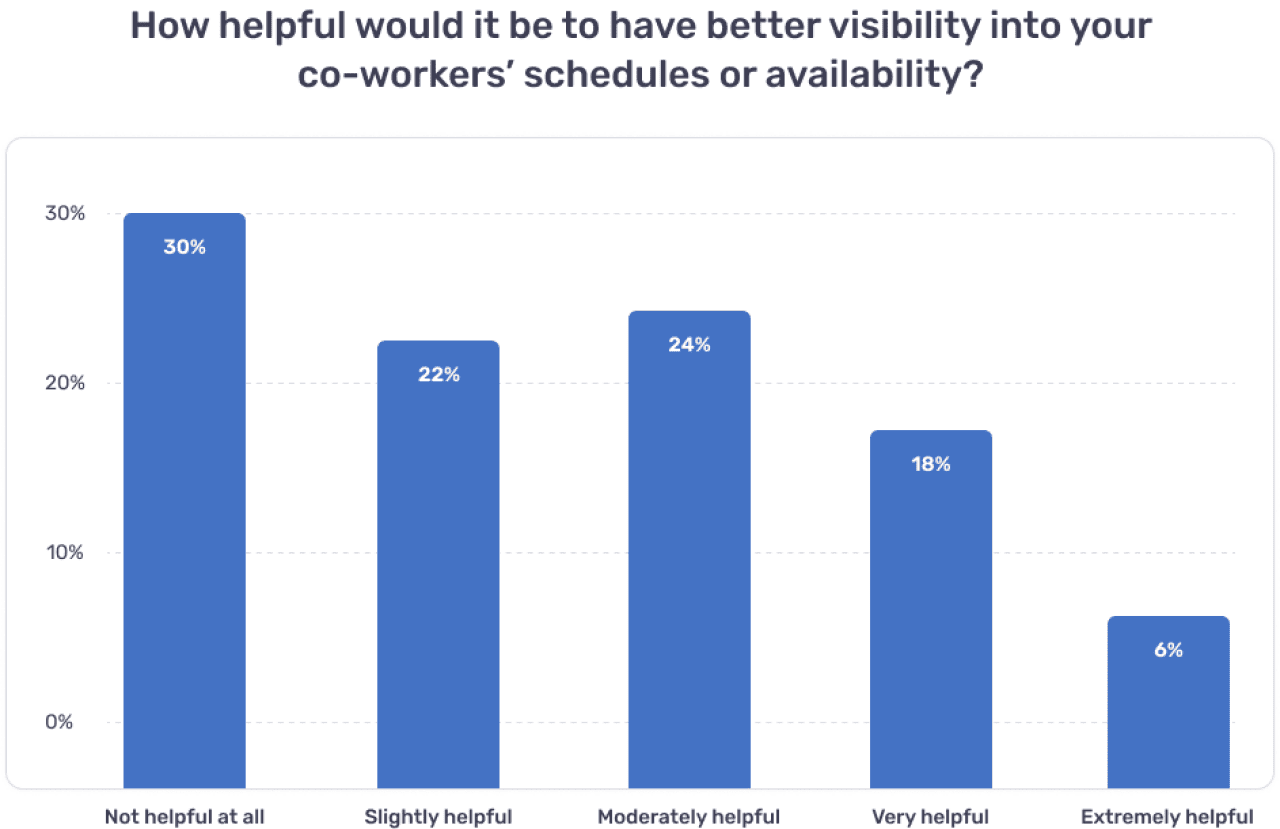
Earlier Buddy Punch findings on time tracking show how much employees value fairness and transparency. Visibility into team schedules reflects that same need. Without it, trust erodes, collaboration slows, and employees feel they’re left guessing instead of working.
Even when schedules are known, the way organizations communicate about time can make or break how smoothly work gets done. For many employees, the real pain point isn’t just the hours they work, it’s how clearly (or poorly) expectations and changes are communicated. Organizations that adopt better tech and more transparent scheduling systems tend to reduce confusion, last-minute shifts, and coordination breakdowns.
On the whole, employees give their organizations decent marks for time-related communication. Nearly 4 in 10 (39%) describe it as very clear and respectful, and another 38% say it’s generally okay. But not everyone agrees: 16% characterize scheduling communication as confusing, inconsistent, or even stressful.
When asked about the biggest day-to-day challenges of coordinating time with co-workers, employees point to short notice or last-minute changes (28%) most often. Other frustrations include poor planning for coverage during time off (18%), conflicts with personal or family time (16%), and unclear expectations about availability (14%). Still, nearly a quarter of employees (24%) say they don’t encounter major challenges at all.
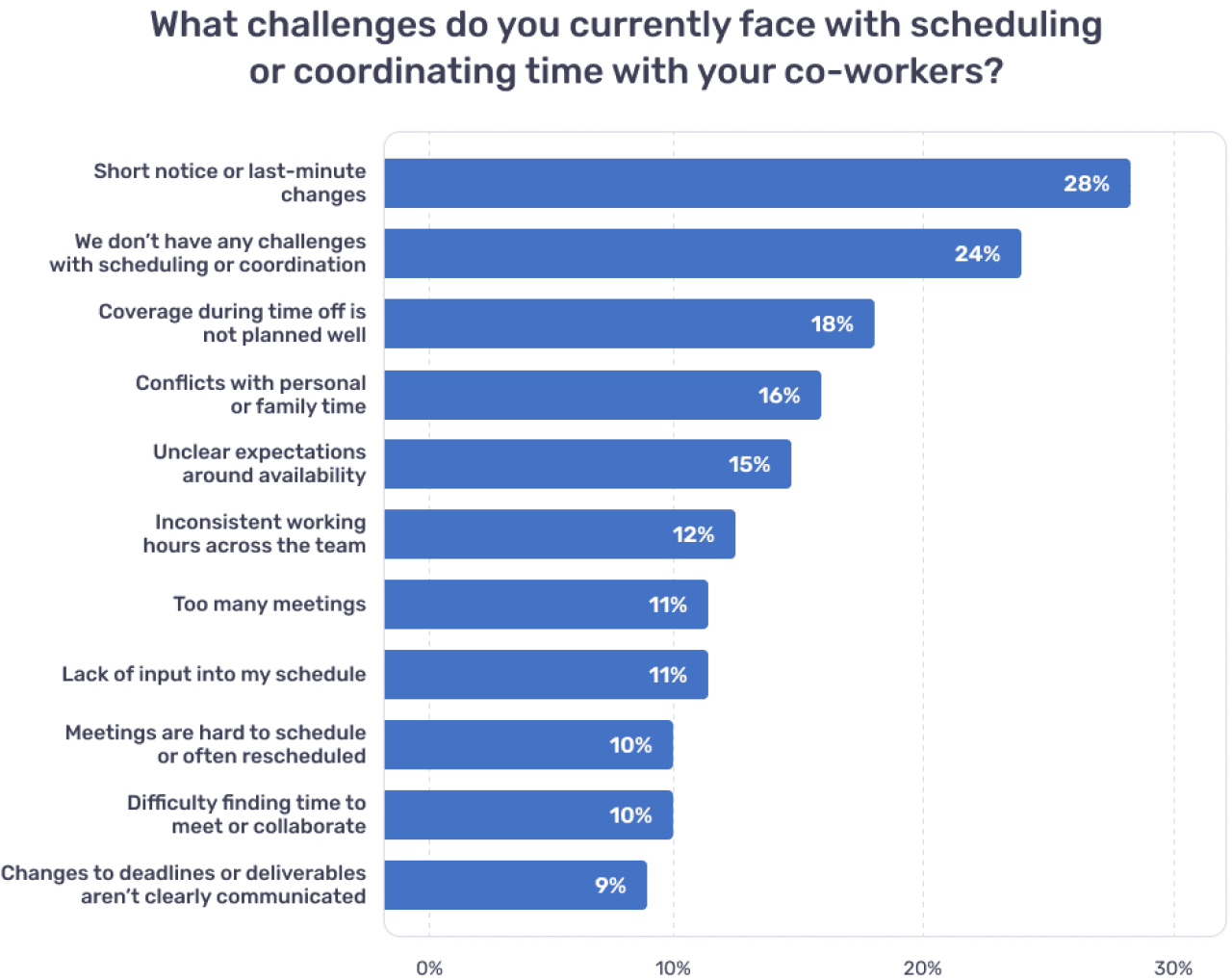
Organizations using smarter scheduling tools — ones that share schedules openly and send automated alerts — can improve transparency, reduce conflict, and make coordination smoother for everyone. However, while many organizations get the basics right, weak communication leaves a sizable share of employees dealing with stress, uncertainty, and preventable conflict. And when communication falters, the impact doesn’t stay confined to scheduling — it spills over into every aspect of work.
That spillover effect is clear in the data. Half of employees say poor time-related communication increases stress or frustration. Others report:
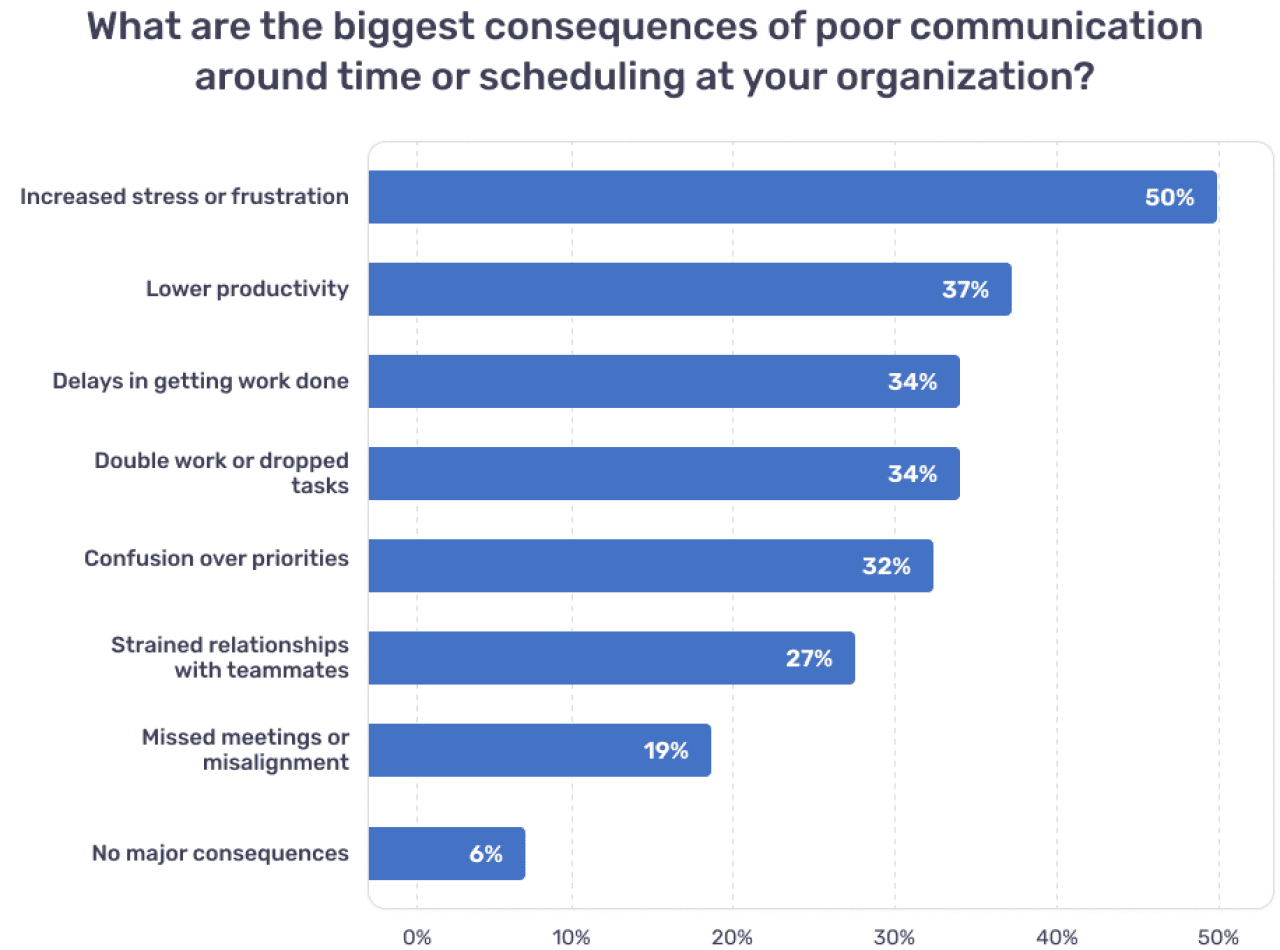
When it comes to making scheduling smoother, employees know exactly what would help most:
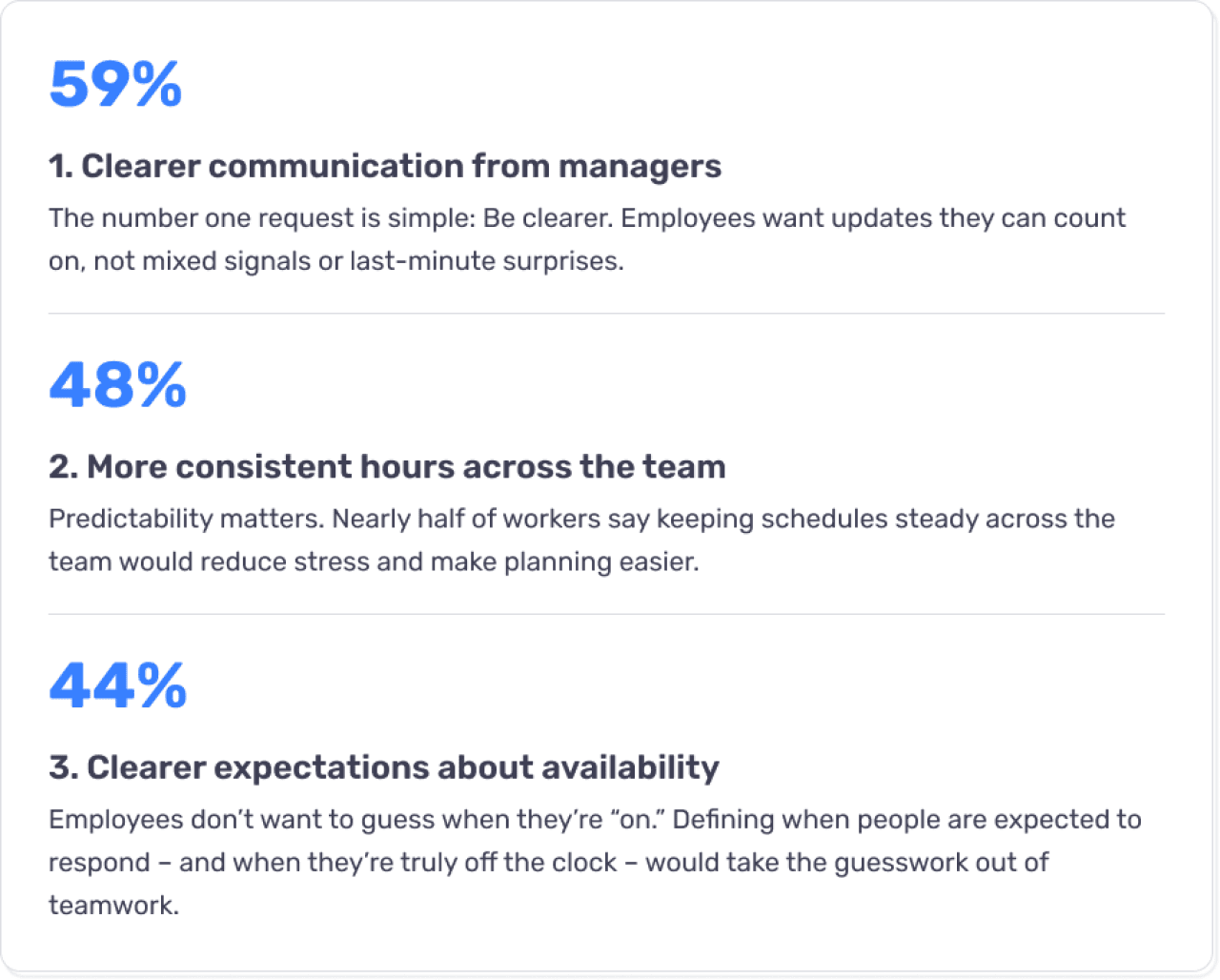
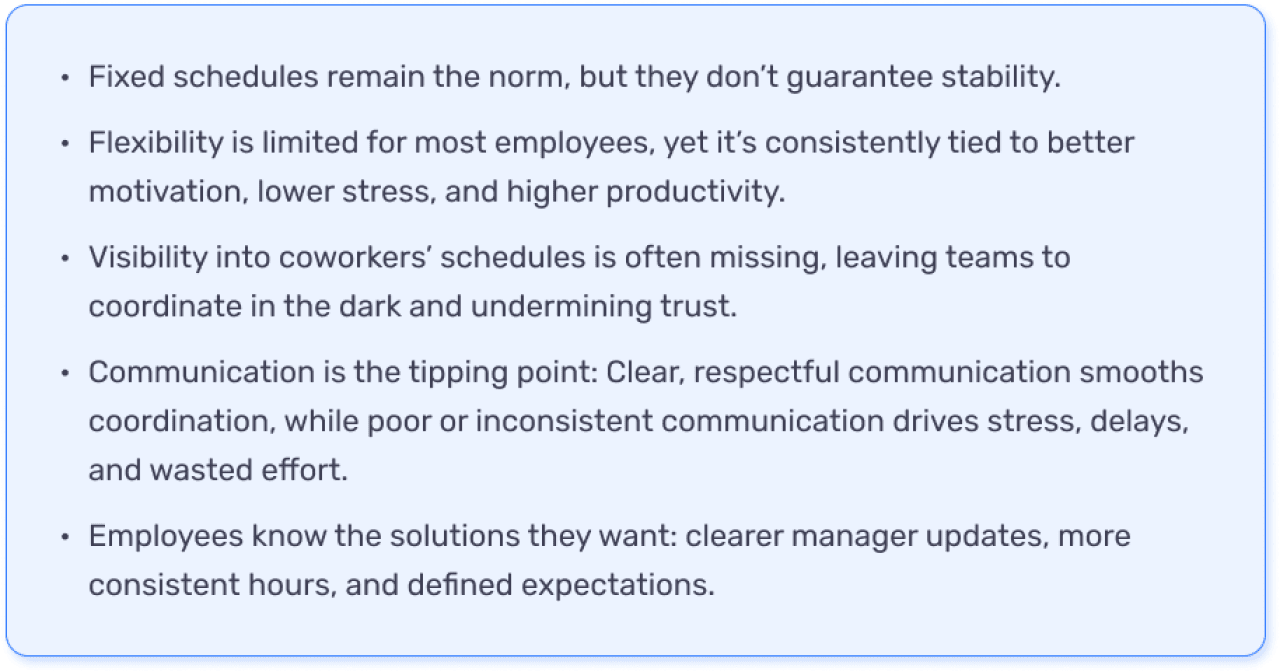
This research shows employees want schedules that are predictable, transparent, and communicated with respect. When scheduling is clear and consistent, it helps people plan their lives, reduce stress, and work more productively. Done poorly, it creates frustration, missed work, and a culture of burnout.
Organizations have a choice: Treat scheduling as a basic administrative task, or as a tool for building clarity and trust. It strengthens communication, reduces stress, and creates workplaces where teams can thrive. Choosing clarity isn’t just good for employees, it’s good for business.
This survey was conducted with 534 U.S.-based adults aged 18 and over who are currently employed full-time or part-time in nonmanagement or self-employed/freelance roles that involve some form of time tracking or monitoring. All respondents had been with their current organization for at least three months. The survey was fielded online from June 30 to July 10, 2025. Results reflect descriptive statistics with no weighting applied.
This story was produced by Buddy Punch and reviewed and distributed by Stacker.
Reader Comments(0)